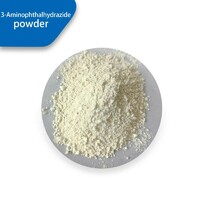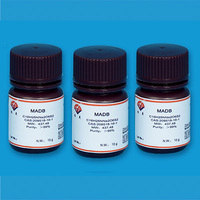HDAOS N-ethyl-N - (2-hydroxy-3-sulfopropyl) - 3,5-dimethoxyaniline
Product Quick Detail
- Minimum Order
- 10
- Place Of Origin
- China (Mainland)
- FOB Price
- USD $50.80 / Piece
- Packaging
- 1g/pc
- Delivery
- 15 Days
Specifications
In the fields of biochemistry and molecular biology, the detection of enzyme activity is one of the important means to understand complex biochemical processes in organisms, evaluate physiological states, and diagnose diseases. With the continuous advancement of science and technology, more and more efficient and sensitive detection methods have been developed. Among them, HDAOS (N-ethyl-N - (2-hydroxy-3-sulfopropyl) -3,5-dimethoxyaniline sodium salt), as a new colorimetric reagent, has shown unique advantages in enzyme activity detection. This article will delve into the application of HDAOS in enzyme activity detection, analyze its principles, advantages, and future prospects.
Basic characteristics and principles of HDAOS
HDAOS is a highly water-soluble derivative of aniline, and its structural characteristics endow it with excellent stability and sensitivity. In enzyme activity detection, HDAOS is usually used as a chromogenic substrate or indicator to participate in the reaction. The basic principle is that in the presence of hydrogen peroxide (H ₂ O ₂) or other oxidants, HDAOS can undergo oxidation reactions to produce colored products. This color change is directly proportional to the amount of hydrogen peroxide or other oxidation products produced in enzyme catalyzed reactions, indirectly reflecting the level of enzyme activity.
The specific application of HDAOS in enzyme activity detection
1. Detection of catalase activity
Catalase (CAT) is an important antioxidant enzyme in living organisms that catalyzes the decomposition of hydrogen peroxide into water and oxygen, thereby protecting cells from oxidative damage. In the detection of catalase activity, HDAOS acts as a chromogenic substrate and reacts with hydrogen peroxide under the catalysis of peroxidase (such as horseradish peroxidase HRP) to generate stable purple or blue dyes. By measuring the absorbance of the reaction product, the concentration of hydrogen peroxide can be calculated to evaluate the activity of catalase. This method is not only easy and fast to operate, but also has high sensitivity and accuracy.
2. Indirect detection of other enzyme activities
In addition to directly detecting catalase activity, HDAOS can also be combined with other enzyme systems to indirectly evaluate the activity of related enzymes by monitoring changes in hydrogen peroxide or other oxidation products produced during the reaction process. For example, in the glucose oxidase (GOD) system, glucose is oxidized to gluconic acid under the catalysis of GOD, while producing hydrogen peroxide. Subsequently, hydrogen peroxide reacts with HDAOS under the catalysis of HRP to produce colored products. By measuring the absorbance of the product, the concentration of glucose can be calculated, indirectly reflecting the activity of GOD. This method has a broad application prospect in diabetes diagnosis, blood glucose monitoring and other fields.
- Country: Afghanistan
- Contact: Doris Yang











